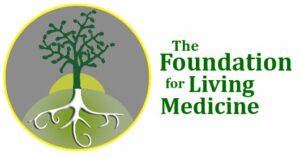
Over 5 million people currently suffer from the Alzheimer’s disease. Statistics estimate that 1 in 10 people over the age of 65 years are affected by it. The disease process takes approximately 8-10 years to work from detection to death. It starts out slowly as two abnormal protein fragments called ‘plaques’ and ‘tangles’ accumulate in the brain, consistently killing off brain cells.
The ‘plaques’ are formed when sticky protein pieces called ‘amyloid-beta’ (sometimes called “beta-amyloid’) clump together to form the plaques. The tangles are formed when there is an abnormal accumulation of a protein called tau. When tau builds up it detaches from microtubules and clumps with other tau proteins. These clumps build up into threads that eventually become ‘tangles’ inside neurons, which block the neurons in the brain from synaptic communication.
The plaques and tangles begin accumulating in the hippocampus area of the brain, which affects memory, and then they work their way into the brain’s language center, making it difficult to instantly bring up appropriate words. Slowly, these abnormal protein fragments spread into all other parts of the brain, finally reaching the brain center that controls breathing and the heart, thereby causing death.
Finding the key to slowing, reversing and curing the Alzheimer’s disease has been a dream and career objective by many researchers for decades. Recently, there have been many promising breakthroughs that indicate potential success could be around the corner. Here are a few of the areas:
Mouse research has been used to help find cures for many diseases, but recently, researchers have discovered how to genetically modify mice so that they will replicate many of the signs of the Alzheimer’s disease. In fact, researchers funded by the National Institute on Aging (NIA) have created a set of 28 genetically diverse mice, so that it is easier to see the large differences in the mice and how they respond to therapies and drugs. This may help researchers more quickly identify what may work on humans.
Reversing Memory Deficits and impairments in spatial learning are high objectives on the research list. Researchers at the Lewis Katz School of Medicine, Temple University, believe they have found that the tau pathology can be reversed by a drug. Learn more HERE.
Compounds from green tea and carrots have been discovered to reverse Alzheimer’s-like symptoms in mice. Specifically, researchers at the Keck School of Medicine, a part of USC’s Zilha Neurogenetic Institute, have been studying the effects of EGCG, or epigallocatechin-3-gallate, which can be found in green tea… and FA, or ferulic acid, which is found in carrots, rice, oats, wheat and tomatoes. Basically, the effect is that these substances seem to prevent the amyloid precursor proteins from breaking down into amyloid beta. To learn more, click HERE.
More studies are on the horizon. Researchers at the Mayo Clinic have documented many of the different areas of research to cure the Alzheimer’s disease.
Other perspectives on how to tackle the disease are also popular. For instance, Dale Bredesen, MD, Director of the Mary S. Easton Center for Alzheimer’s Disease Research, at UCLA, and the Founding President/CEO of the Buck Institute, tackles the disease from a completely different perspective. Instead of focusing solely on the amyloid beta and tau plaques and tangles, which he does not believe to be the primary causes of the disease, Dr. Bredesen has developed a lifestyle-based protocol for curing the disease. Specifically, through his protocol, titled ReCODE (Reversal of Cognitive Decline), Dr. Bredesen and his colleagues have identified 36 drivers, or “neuroterrorists,” as they call them. He says that once you can identify and address the triggers within yourself, the disease can be prevented or cured. Here is a short listing of some of the triggers:
- Insulin resistance, diabetes and obesity
- Gluten sensitivity
- Leaky gut
- Refined carbs
- Trans fats
- Chronic emotional stress
- Lack of exercise
- Nutrient-depleted diets
To get the whole list, click HERE.
